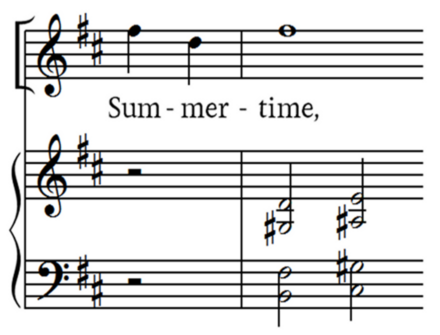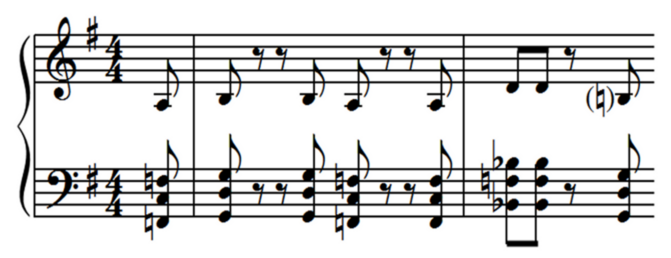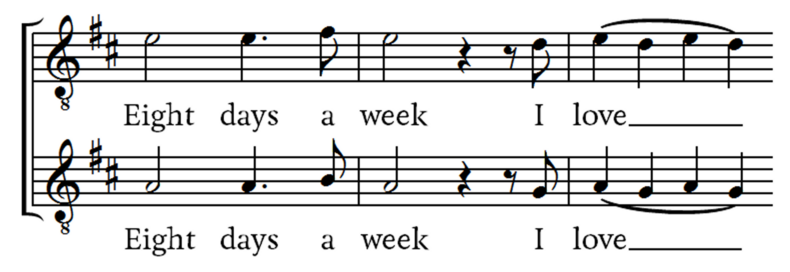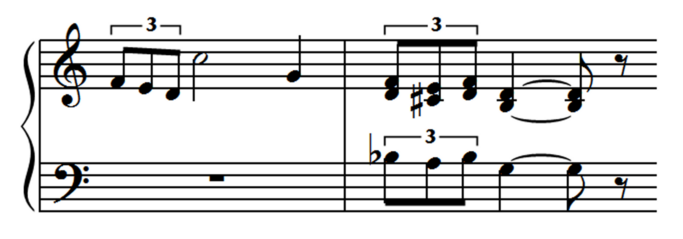 In classical counterpoint it is forbidden to let voices move in parallel fifths. Does this rule apply to pop and jazz as well? To find out, it is worthwhile to examine examples. For that purpose, I have collected a couple of famous pieces of music with parallel fifths.
In classical counterpoint it is forbidden to let voices move in parallel fifths. Does this rule apply to pop and jazz as well? To find out, it is worthwhile to examine examples. For that purpose, I have collected a couple of famous pieces of music with parallel fifths.
Right from the start of jazz we can find parallel fifths. For example, in the first bars of Summertime Gershwin wrote them in the accompaniment:

These parallels do not catch the eye, because the chords he uses are fairly uncommon, minor chords with an added sixth. Here is another example from jazz music in which the parallels are clearly audible, the Theme from Pink Panther:

In rock music, parallel fifths are played all the time, though they are not used as deliberate as in the examples above. They arise from playing parallel chords or power chords on the guitar. Here is an example from the sixties, the famous intro of All Day and All of the Night by The Kinks :

The Beatles use fewer parallel fifths. If it happens, it seems to be a very deliberate choice, like in the two-voiced singing in Eight Days a Week:

The fifths don’t sound logical (and probably that it exactly like Lennon and McCartney meant them to be).
Finally, here are two examples of parallel fifths in the film music by John Williams. First, Star wars:

And second in the theme from Harry Potter:

In the music of Star Wars the fifths sound bold, though kind of extra-terrestrial. In Harry Potter the fifths are combined with chromatic movements, creating a strange and scary feel.